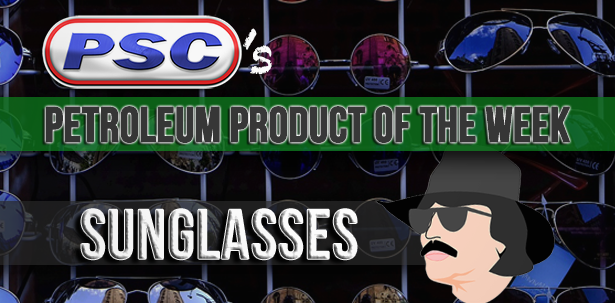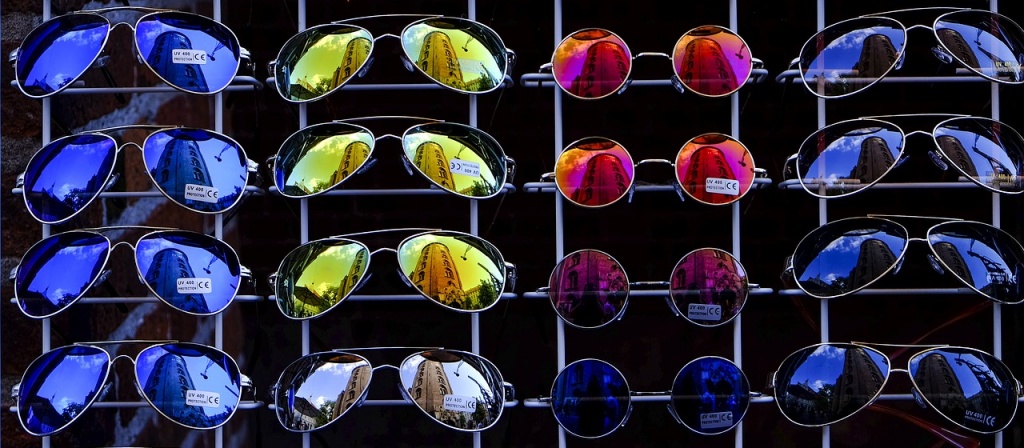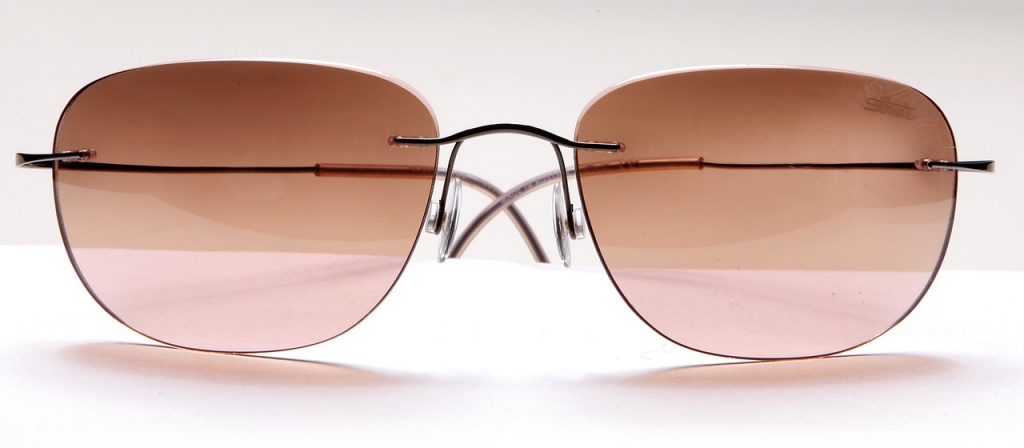Petroleum Product of the Week: Sunglasses
By on Jul 14 2017

In the summer, you want to look super shady, right? Uhh ...
Everyone knows that the best way to look (and feel) cooler is to add a pair of sunglasses to your ensemble. Especially during the summer heat (even at night sometimes if you want to keep track of the visions in your eyes). But it can't be just any old pair of sunglasses.
Oh no. It has to be the right pair.
We've probably all been there ... the sunglasses section at any store or retail outlet. For what seems like forever. Trying on pair after pair of shades. Metal or plastic frames? Polarized or tinted? Is this the right shape for my face? Do they go with my haircut? Do they give the right impression? WHO DO THESE SUNGLASSES TELL ME I AM AS A HUMAN BEING?!
Trust me, I get it. I have so many pairs of sunglasses (mostly because I break them or lose them frequently).
The Importance of Being Shady

Eyewear is a huge market and has been steadily growing in the U.S. Of the four main categories of eyewear (Rx lenses, sunglasses, over-the-counter readers, and contact lenses), sunglasses make up a significant portion of the $90 billion global market (the U.S. market alone is around $35 billion).
In 2015, plano sunglass (non-prescription) sales generated $218 million in the U.S. If you're a visual thinker, that's 109 million tacos (assuming they're 2 bucks each). With 109 million tacos, you could feed just about everyone in Pennsylvania 8 tacos each*. Now, wouldn't that be great?! Yeah, you can't wear tacos and they don't protect your eyes, but you can eat them and they protect you from hunger. I think we all know what's better ...
Tacos aside, people love sunglasses. And thanks to pop culture, we have all kinds of iconic eyewear. We have the Ray-Ban Wayfarers of James Dean and Tom Cruise. Ray-Ban Aviators were initially promoted for actual aviators thanks to General MacArthur and have become super trendy with the help of former VP Joe Biden, and, once again, Tom Cruise. Though the iconic red heart-shaped sunglasses never appear in Stanley Kubric's 1962 film Lolita, we can never look at red lollipops the same way. And we can't forget about all the other shady style icons: Audrey Hepburn, the Men in Black, Miles Davis ... you get the picture.

The Right Kind of Protection
Sunglasses serve more purpose than just cultivating that perfect image--they're stylish protection, after all. Sunglasses prevent sunlight and high-energy visible light (HEV light) from damaging the wearer's eyes. Ultraviolet radiation can cause both short-term and long-term ocular problem. Experts recommend wearing sunglasses that reflect or filter out at least 99% of UVA and UVB light, with wavelengths up to 400 nm.
Sunglasses also provide visual clarity and comfort by reducing glare, including road surfaces when driving into the sun (or sunset, if it's a romantic day).
Of course, people also wear sunglasses to hide their eyes and to avoid eye contact.
How They're made
While history is full of precursors to sunglasses, their widespread use wasn't until the 1920s. Movie stars, in particular, wore them often and helped make them famous. In 1929, Sam Foster made the first inexpensive, mass-produced sunglasses made from celluloid. These were called Foster Grants and the company still exists today.
In 1938, Life magazine reported 20 million sunglasses were sold in the United States the previous year (and only about 25% of wearers needed them for eye protection). That same publication reports 95% of the sunglasses sold (mostly from drug and dime stores ") are made from pressed glass, which is frequently flawed. These flaws are bad for the eyes. The other 5%, they say, are made from various types of colored ground glass or Polaroid. "
Materials
Today, sunglasses exist in a variety of different materials, shapes, and colors for just about every budget and need. Plastic or metal framed sunglasses with polycarbonate lenses are the most common.
To put it simply, polycarbonate is essentially just colored plastic. It's very durable, lighter in weight than normal plastics, blocks UV rays, and has high-impact resistance, although low-scratch resistance. A hard, scratch-resistant coating is typically applied for extra protection.
Lens materials include plastic, Trivex, high-index plastics (thiourethanes), and crown glass. Plastic lenses are much more common (and durable) compared to glass lenses. Your prescription and frames both affect the lens material and vice versa.
A number of different optical coatings are available to provide extra protection and increase clarity and comfort. These can include anti-reflective, ultraviolet protection, and scratch-resistant coatings. Polarized sunglasses have wafer-like sheets of polyvinyl acetate (PVA) that block horizontal rays to prevent glare.

What's Right for You?
Aviators have the reputation of being great for every face shape, even if you're not a pilot. I'd have to agree, given that I refuse to purchase anything other than aviators. (This is actually a lie. I have, but I just never wear them.)
When it comes to getting shady, your own requirements will dictate what type of glasses you should get or be on the lookout for. If you're considering them exclusively as a fashion accessory, the lenses and coating might not matter much beyond what looks and feels good. If you're spending a lot of time outdoors and want a pair to protect your eyes from the harmful skies, you'll definitely want to pat attention to its UV protection. Do you fish? You'll definitely want to spring for some polarized shades, otherwise, you won't be able to see anything through the water's glare. If you're a golfer, some people swear that polarized is the only way to go to cut the glare, although this is a hot topic up for dispute.
My suggestion? Spend as long as you need in the sunglasses section. Go to a specialty store and talk to someone if you're having trouble finding something that works best for you.
Go out and see the world through whatever color-tinted glasses you want.

*This calculation didn't take into consideration PA's 6% sales tax on restaurant food. Including sales tax, each Pennsylvanian would receive about 7.91 tacos as compared to the 8.38 tacos without tax. It's about a 0.47 taco loss per individual--but rounding up, it's still technically 8 tacos.
Sources:
https://www.businessoffashion.com/articles/intelli...
https://www.statista.com/topics/1470/eyewear-in-th...
https://www.ctswholesalesunglasses.com/pages/how-s...





